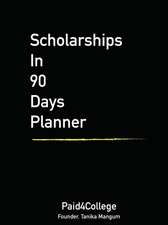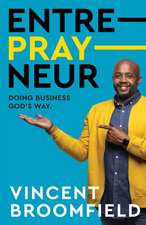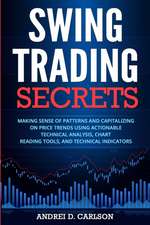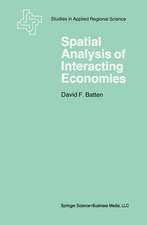Economic Approaches to Organizations
Autor Hein Schreuder, Sytse Doumaen Limba Engleză Paperback – 4 apr 2017
Preț: 566.76 lei
Preț vechi: 651.45 lei
-13% Nou
Puncte Express: 850
Preț estimativ în valută:
108.48€ • 117.88$ • 91.19£
108.48€ • 117.88$ • 91.19£
Carte disponibilă
Livrare economică 31 martie-14 aprilie
Livrare express 14-20 martie pentru 36.81 lei
Preluare comenzi: 021 569.72.76
Specificații
ISBN-13: 9781292128900
ISBN-10: 1292128909
Pagini: 400
Dimensiuni: 189 x 246 x 20 mm
Greutate: 0.67 kg
Ediția:6 ed
Editura: Pearson Education
ISBN-10: 1292128909
Pagini: 400
Dimensiuni: 189 x 246 x 20 mm
Greutate: 0.67 kg
Ediția:6 ed
Editura: Pearson Education
Notă biografică
Sytse Douma is professor of business administration at Tilburg University.
Hein Schreuder was executive vice president of corporate strategy and acquistitions at Royal DSM N.V. until 2012. He is honorary professor of business economics at Maastricht University and board member of the Vlerick Business School in Belgium.
Hein Schreuder was executive vice president of corporate strategy and acquistitions at Royal DSM N.V. until 2012. He is honorary professor of business economics at Maastricht University and board member of the Vlerick Business School in Belgium.
Cuprins
Preface xi Acknowledgements xv
Part I Foundations 1
- Markets and organizations 3
- 1.1 The economic problem 3
- 1.2 The division of labour 5
- 1.3 Specialization 7
- 1.4 Coordination 9
- 1.5 Markets and organizations 11
- 1.6 Information 14
- 1.7 The environment and institutions 16
- 1.8 Historical perspective 22
- 1.9 Summary: the conceptual framework of this book 24
- 1.10 Outline of the book 25
- Questions 26
- Notes 26
- Markets 27
- 2.1 Introduction 27
- 2.2 Market interaction: analysis of demand and supply 28
- 2.3 Decision-making by consumers 29
- 2.4 Decision-making by producers 31
- 2.5 Market coordination 32
- 2.6 The paradox of profits 33
- 2.7 Competitive markets 33
- 2.8 The main assumptions underlying standard microeconomic theory 34
- 2.9 Summary: how according to standard microeconomic theory decisions are coordinated by the market 36
- Questions 37
- Organizations 38
- 3.1 The world of organizations 38
- 3.2 Organizational coordination 39
- 3.3 Types of organizations 44
- 3.4 Organizational markets 49
- 3.5 Organized markets 50
- 3.6 The rise of the Internet and the digitization of organizations 53
- 3.7 Digital platforms: a new coordination mechanism 56
- 3.8 The Platform Organization 59
- 3.9 Summary: how organizations achieve coordination 62
- Questions 64
- Notes 64
- Information 66
- 4.1 Coordination and information 66
- 4.2 Hidden information 71
- 4.3 Hidden action 78
- 4.4 The value of information 83
- 4.5 Information as an economic good 86
- 4.6 Summary: information problems for markets and organizations 88
- Questions 90
- Notes 91
- Game theory 92
- 5.1 Introduction 92
- 5.2 The prisoner's dilemma 93
- 5.3 Coordination games 97
- 5.4 The entry game 99
- 5.5 The iterated prisoner's dilemma 103
- 5.6 Auctions 105
- 5.7 Evolutionary game theory 111
- 5.8 Summary: insights from game theory 116
- Questions 118
- 6 Econs and Humans 119
- 6.1 Introduction 119
- 6.2 The social domain versus the economic domain 120
- 6.3 Economic, social and moral man: bounds on self-interest 121
- 6.4 Bounds on rationality 124
- 6.5 Prospect theory 127
- 6.6 Summary: behavioural economics 130
- Questions 131
- Behavioural theory of the firm 135
- 7.1 Introduction 135
- 7.2 The firm as a coalition of participants 135
- 7.3 Organizational goals 139
- 7.4 Organizational expectations 142
- 7.5 Organizational choice 142
- 7.6 From bounded rationality to behavioural economics 145
- 7.7 Summary: goals and decision-making within the firm in behavioural theory 150
- Questions 152
- Notes 154
- Agency theory 155
- 8.1 Introduction 155
- 8.2 Separation of ownership and control 156
- 8.3 Managerial behaviour and ownership structure 159
- 8.4 Entrepreneurial firms and team production 165
- 8.5 The firm as a nexus of contracts 167
- 8.6 Theory of principal and agent 169
- 8.7 Applying agency theory 178
- 8.8 Summary: agency relations between owners, managers and employees 182
- Questions 184
- Notes 186
- Transaction cost economics 187
- 9.1 Introduction 187
- 9.2 Behavioural assumptions: bounded rationality and opportunism 189
- 9.3 Dimensions of transactions 195
- 9.4 Peer groups 200
- 9.5 Simple hierarchies 202
- 9.6 Multistage hierarchies: U-form and M-form enterprises 204
- 9.7 Organizational markets 205
- 9.8 Digitization and transaction costs 208
- 9.9 Markets and organizations: are these all there is? 211
- 9.10 Governance in a three-level schema 223
- 9.11 Summary: effect of transaction costs on choosing between markets and organizations and organizational forms 225
- Questions 227
- Notes 228
- Economic Contributions to business/competitive strategy 229
- 10.1 Introduction 229
- 10.2 Industry analysis 232
- 10.3 Competitor analysis 236
- 10.4 Competitive strategy 239
- 10.5 Resource-based view of the firm 240
- 10.6 Dynamic capabilities 244
- 10.7 Move and counter move 248
- 10.8Summary: how economic analysis can contribute to the formulation of competitive strategies 259
- Questions 259
- Notes 259
- Economic contributions to corporate strategy 260
- 11.1 Introduction 260
- 11.2 Unrelated diversification 263
- 11.3 Related diversification 271
- 11.4 Horizontal multi-nationalization 276
- 11.5 Vertical integration 279
- 11.6 Summary 284
- Questions 286
- Notes 287
- Evolutionary approaches to organizations 288
- 12.1 Introduction 288
- 12.2 Giraffes 288
- 12.3 Organizations and giraffes 290
- 12.4 Organizational ecology 293
- 12.5 An evolutionary theory of economic change 302
- 12.6 Comparison 307
- 12.7 The evolution of dynamic capabilities 310
- 12.8 Further developments 317
- 12.9Summary: the evolutionary perspective 323
- Questions 325
- Notes 327
- 13 All in the family 328
- 13.1 Introduction 328
- 13.2 The basic conceptual framework 328
- 13.3 Family resemblances 330
- 13.4 Family differences 333
- 13.5 Summary: all in the family? 341
- 13.6 Organizations as complex, adaptive systems 342
- Questions 357
- Notes 358

















